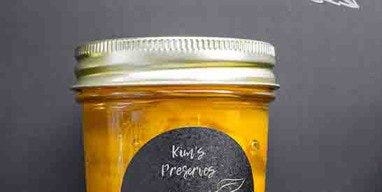A Guide to Glass Blowing
Article By : Jonathan @ BottleStore
Where do the glass bowls and other containers and objects we see every day come from? The answer is glassblowers who take glass and shape it into useful objects and decorative items. Glassblowers practice the art of glassblowing, which has been around for thousands of years and without which we would not have the glass objects that we enjoy today. Glassblowing is a fascinating science with a long history, and learning about it can help us appreciate everything that glassblowers have done to provide us with useful and beautiful glass items.
Human beings have been using glass since at least 1500 B.C., and it is thought that the Phoenicians were the first to figure out how to make and use glass. At first, only the richest people could afford glass because making it was very expensive. The first glass was used as a glaze on pottery, but eventually, people learned how to make entire objects out of glass. This ancient glass was unlike the glass known today. Glass is made from silica, which is found in sand, and it takes a lot of heat to melt silica down and form it into glass. Since ancient glass-producers could not always generate enough heat to evenly melt the sand, many of the glass objects we have found from the ancient world are opaque, not clear. They have undissolved grains of sand in them that keep you from being able to see through them.
Over time, people's glass-melting and -constructing skills got better, and glass-makers found that they could even make colored glass by adding different elements to the hot glass. This colored glass was used to make many different beautiful things, including stained glass windows. In time, it was even made into lamp shades by artists such as Louis Comfort Tiffany. Tiffany's work was done in the 19th and early 20th centuries, building on all that came before him. Centuries earlier, the ancient Romans had learned how to blow glass into all sorts of shapes, and the Roman Empire became an important producer of glass in the ancient world. The empire used it to make different bottle designs as well as many other things. Modern companies such as Corning have taken the same basic techniques and improved them to make glass of many kinds for all different uses. The blowing of molten glass has paved the way for making such things as computer screens, windows, and more. The artistic use of glass has not died out, though. Fine-glass artists such as Dale Chihuly and many others continue to make beautiful art from blown glass. One other special area of glassblowing is scientific glassblowing, in which things like test tubes, beakers, and other special items are made for use in science experiments.
- Chihuly Glass Artwork
- Roman Glass
- History of Waterford Crystal
- History of Corning Innovation
- A Chronology of Louis J. Tiffany and Tiffany Studios
- Louis Comfort Tiffany
The basic science of glassblowing involves making molten glass, which is done in ovens that get as hot as 2,000 degrees Fahrenheit. At that temperature, silica melts into molten glass and can be shaped by dipping rods into it and rolling it on special tables. The glass must be heated some more as it is being shaped because if it cools too much while artisans are trying to shape it, it will crack. Special scissors can be used to cut molten glass into different shapes, and other tools, like crimps, can add decorative patterns. Glassblowing is often done by a team of artists or crafters that is led by a glassblower known as the gaffer. In factories, glass is often made with the help of molds and machines that can quickly make things such as a soda bottle, but all of these would not exist if glassblowers had not figured out ways to work with glass.
- What's the Science of Glassblowing?
- Tools of the Glassmaker
- Inventing American Laboratory Glass
- The (Nearly) Lost Art of Scientific Glassblowing
Glassblowing is an art and a science, and there is still demand for glassblowers today. Some glassblowers focus on fine art. Others make glass tools. But all glassblowers are artists who use a combination of artistic skill and the right tools to make glass bottles, art, bowls, and lots of other things that people use every day.
Plastic Containers
Glass Bottles, Jugs & Jars













